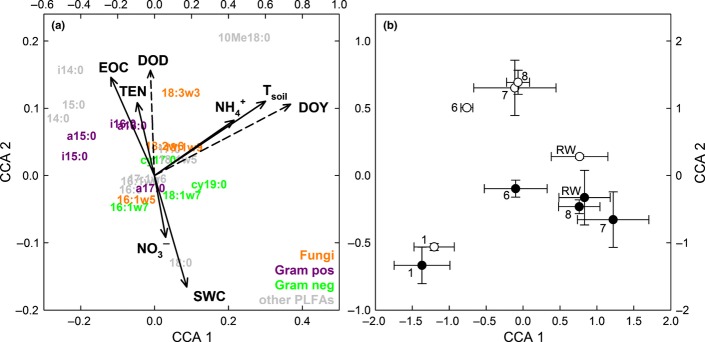Figure 3.

The effects of soil parameters and time on soil microbial community composition, as determined by canonical correspondence analysis (CCA). Relative abundances of phospholipid fatty acids (PLFAs) were used as the soil microbial community matrix, and soil parameters (gravimetric soil water content (SWC); soil temperature at 5 cm (Tsoil); extractable organic carbon (EOC); total extractable nitrogen (TEN); ammonium-N (NH4+); nitrate-N (NO3−)) and time (day of the year (DOY); days of drought (DOD) (dashed arrows)) were used as the environmental data matrix. Single PLFAs are coloured according to their attribution to microbial groups. The CCA is based on data from samples collected during drought (1, 6, 7 and 8 (after mowing) weeks of drought), as well as 1 wk after rewetting (RW). The contribution of constrained variability to total variability was 35%, of which CCA1 accounted for 60% and CCA2 for 15%. The significances of CCA1 and CCA2 were P = 0.005 and P = 0.15, respectively (permutation test). (a) Biplot of the distribution of single PLFAs and environmental parameters. (b) The distribution of samples collected during drought and after rewetting in control (closed circles) and drought (open circles) plots; characters next to symbols identify the time of sampling (error bars indicate SE).
